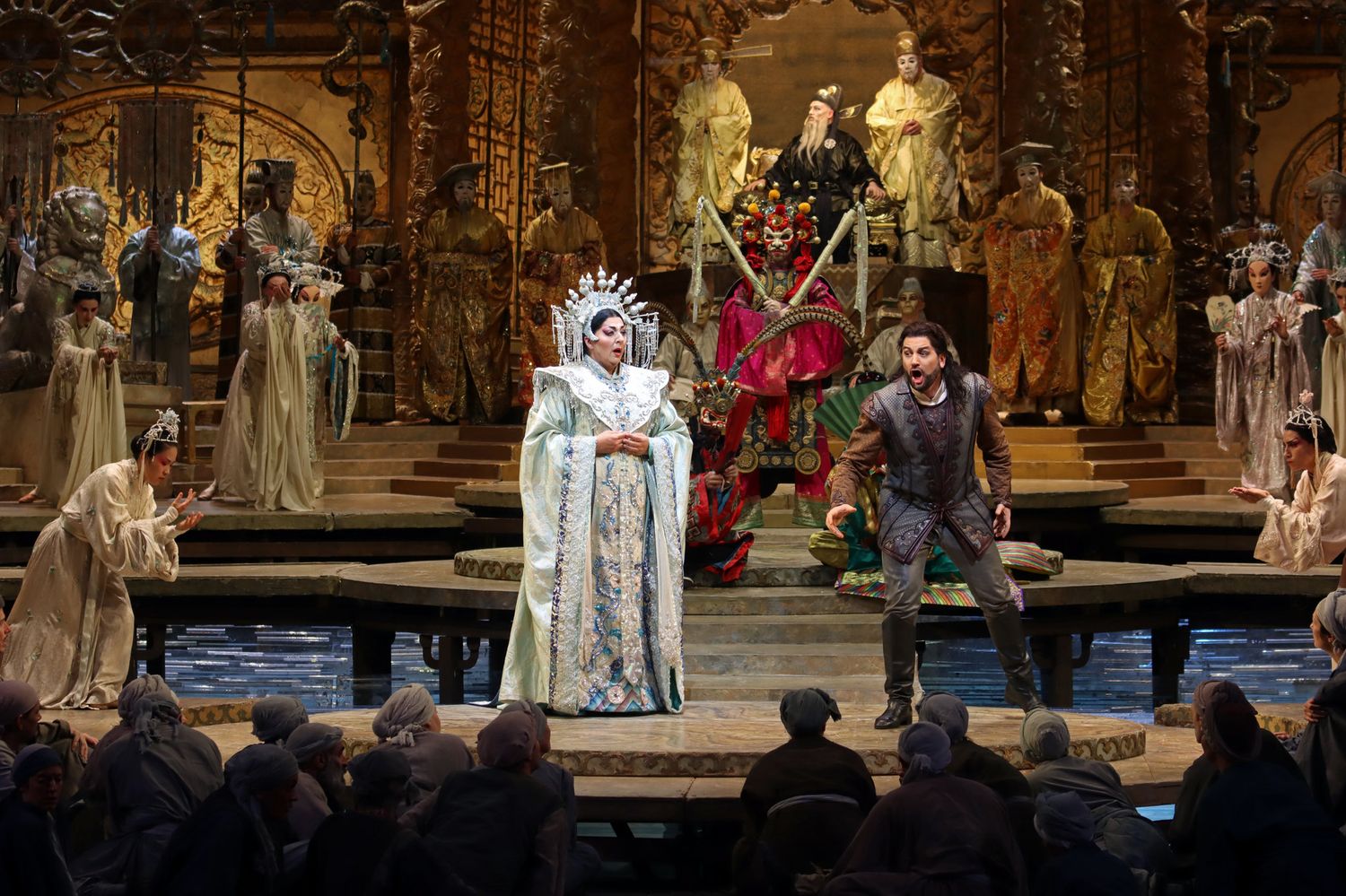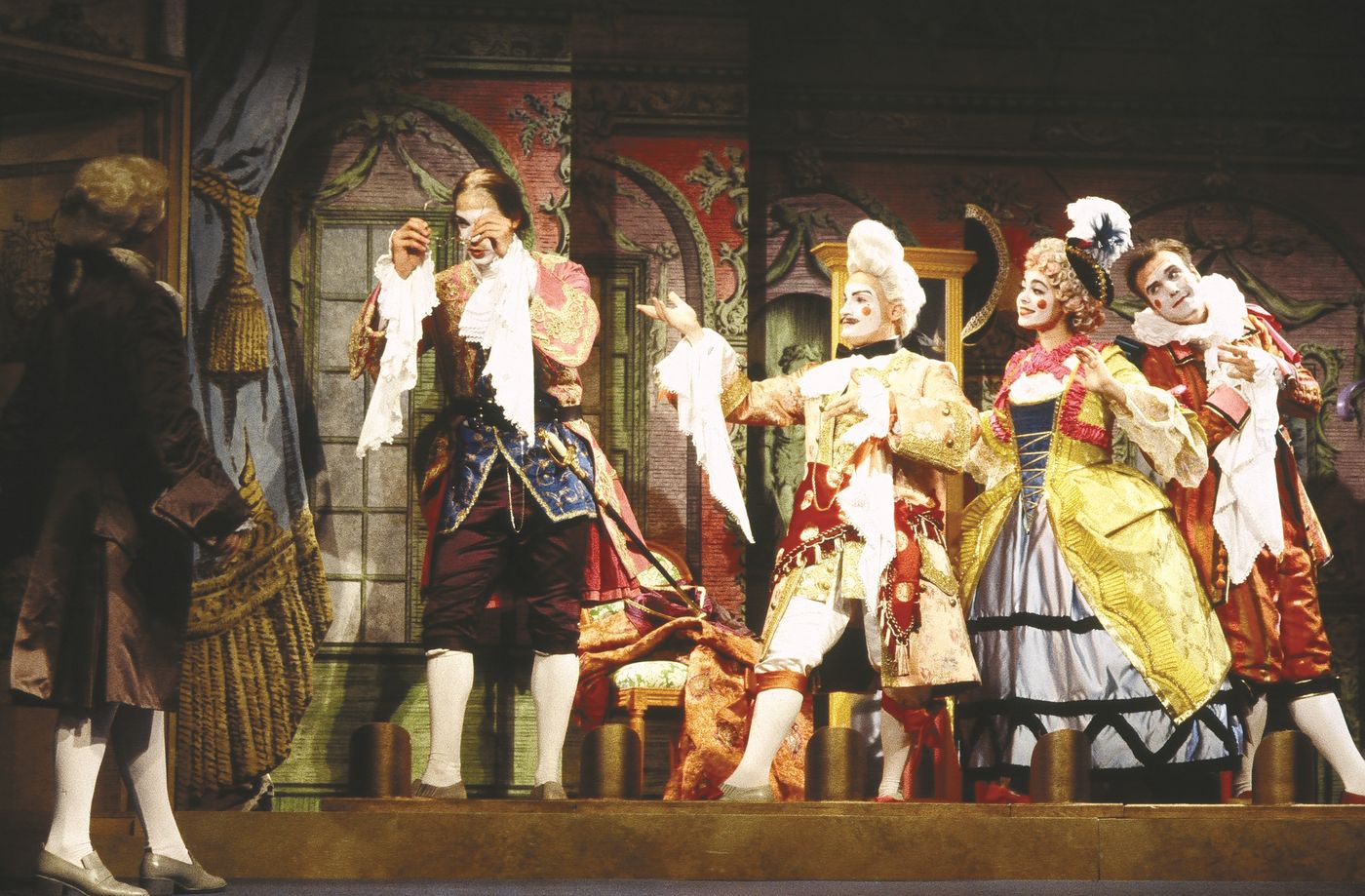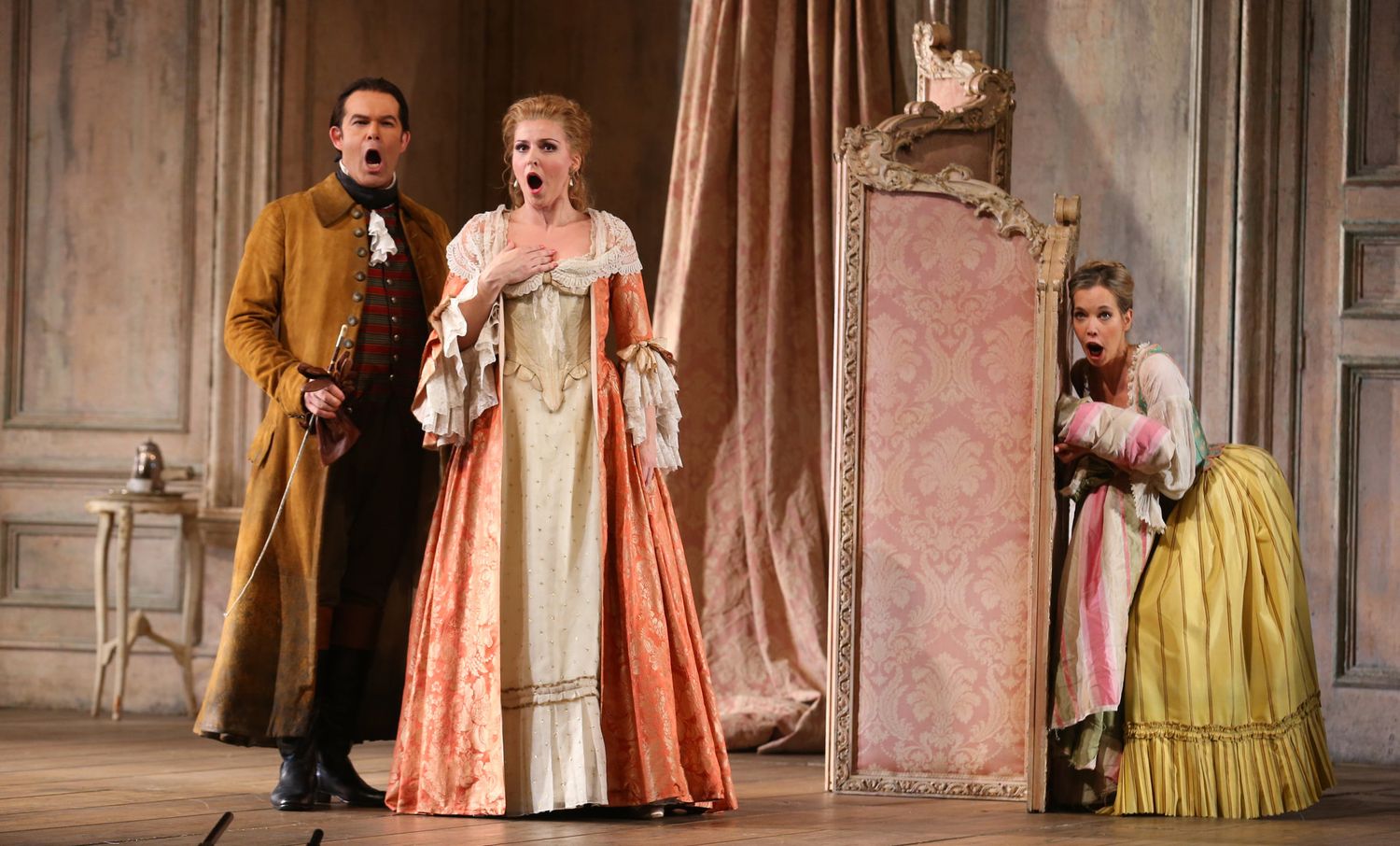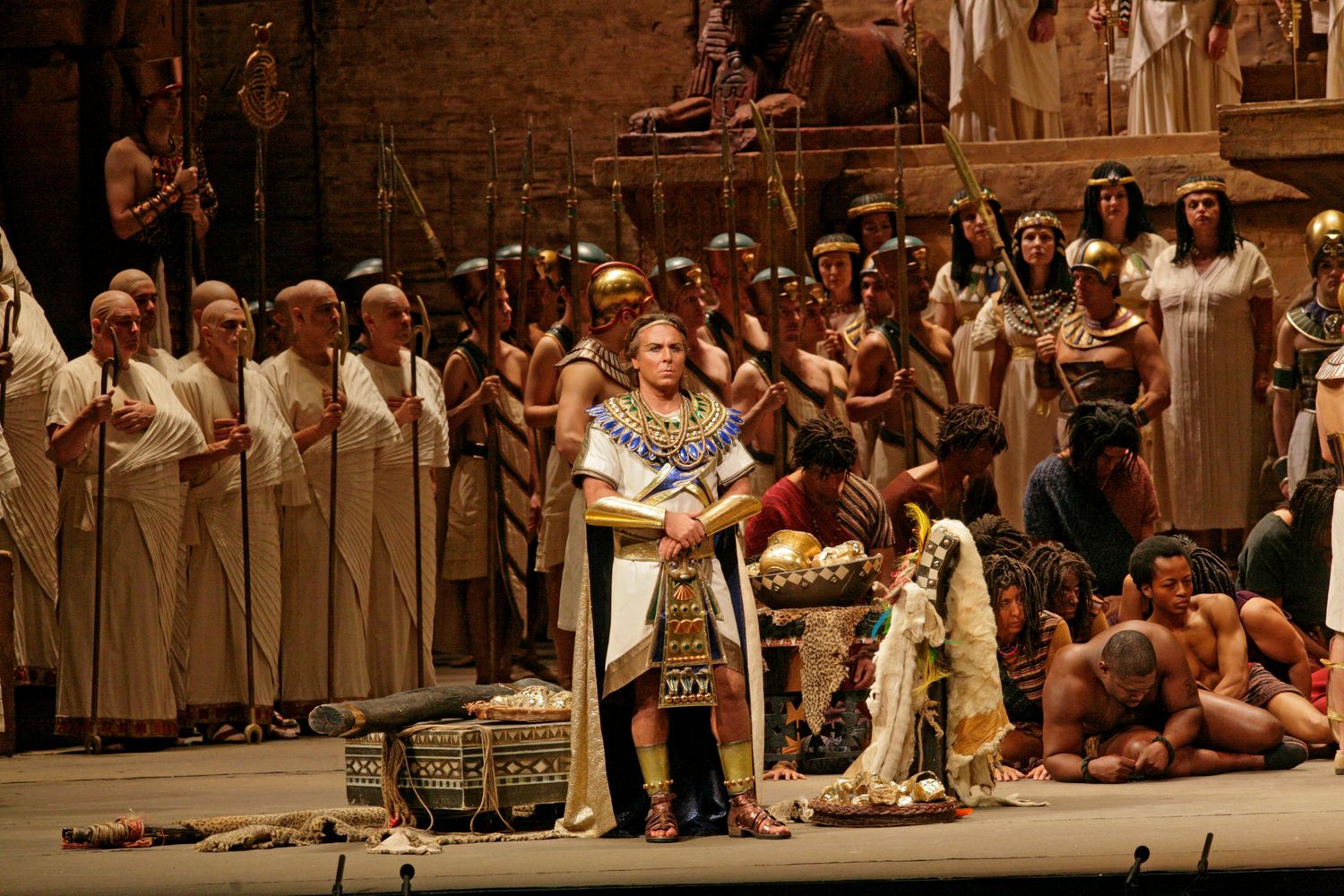Home>Events & Info>Opera>What Is The Story Of Turandot The Opera


Opera
What Is The Story Of Turandot The Opera
Modified: January 22, 2024
Discover the captivating tale of Turandot, an enchanting opera renowned for its captivating music and dramatic storytelling. Uncover the mesmerizing world of opera and immerse yourself in this timeless art form.
(Many of the links in this article redirect to a specific reviewed product. Your purchase of these products through affiliate links helps to generate commission for AudioLover.com, at no extra cost. Learn more)
Table of Contents
Introduction
Opera is a unique and enchanting art form that seamlessly combines music, drama, and visual spectacle. It has the power to transport audiences to different worlds and evoke a myriad of emotions. One opera that exemplifies the grandeur and magic of this art form is “Turandot.”
“Turandot” is an opera in three acts composed by Giacomo Puccini. It is a tale of romance, conflict, and ultimate redemption set in ancient China. The opera’s captivating storyline, memorable music, and larger-than-life characters have made it a staple in the opera repertoire since its premiere in 1926.
The opera is based on a play by Carlo Gozzi, which in turn was inspired by a Persian fairy tale. The story revolves around the beautiful Princess Turandot, who challenges suitors to answer three riddles. Failure to answer correctly results in death. Enter Calaf, a prince who is captivated by Turandot’s beauty and takes on the challenge to win her hand in marriage.
As the opera unfolds, we are drawn into a world of passion, sacrifice, and the triumph of love over cruelty. “Turandot” is a masterpiece that explores timeless themes such as power, identity, and the pursuit of true love.
In this article, we will delve into the origins of “Turandot,” explore the synopsis of the opera, discuss its iconic characters, and examine the music that brings the story to life. We will also take a look at the various productions and performances of “Turandot” over the years and explore its lasting legacy in the world of opera.
So sit back, relax, and prepare to be transported to the mythical world of “Turandot,” where love and destiny collide in a spectacular display of music and drama.
The Origins of Turandot
The origins of “Turandot” can be traced back to a variety of sources, all of which contribute to the unique and captivating nature of the opera. The primary source is a play by Carlo Gozzi, an Italian playwright of the 18th century, titled “Turandotte.”
Gozzi’s play was influenced by a Persian fairy tale from the collection “One Thousand and One Nights.” The story revolves around a princess named Turandokht, who poses three riddles to her suitors. In both the fairy tale and Gozzi’s play, the consequences of failure are severe: the suitors are put to death.
It was the renowned Italian composer Giacomo Puccini who took Gozzi’s play and transformed it into the timeless opera that we know today. Puccini was intrigued by the dramatic potential of the story, and he saw an opportunity to create a rich musical tapestry that would combine exoticism, grandeur, and emotional depth.
However, Puccini’s composition of “Turandot” was left incomplete at the time of his death in 1924. The task of finishing the opera fell to Puccini’s close friend and fellow composer, Franco Alfano. Alfano utilized Puccini’s sketches and notes to complete the final act of the opera, ensuring that Puccini’s vision would be realized.
It is worth noting that Puccini’s decision to set the story in ancient China was also influenced by the popularity of Orientalism in Europe during the late 19th and early 20th centuries. This fascination with the East, fueled by cultural exchange and colonial expansion, permeated various art forms, including opera.
By setting “Turandot” in ancient China, Puccini created a world that was both exotic and familiar to Western audiences. The opera features lavish costumes, elaborate sets, and a sense of mystery that captures the allure of the Orient.
Overall, the origins of “Turandot” blend elements of Italian drama, Persian folklore, and European Orientalism to create a one-of-a-kind opera that is both captivating and culturally significant.
Synopsis of Turandot
“Turandot” is set in ancient China, where the strong-willed Princess Turandot challenges potential suitors with three riddles. Any man who fails to answer correctly is executed. Despite the risks, Prince Calaf falls in love with Turandot’s beauty and accepts the challenge.
The opera opens with the beautiful aria “Nessun Dorma,” sung by Calaf, as he arrives in Beijing and gazes upon the palace where Turandot resides. Calaf’s father, Timur, and his loyal servant, Liu, accompany him. Liu, secretly in love with Calaf, worries about the prince’s dangerous quest.
The first act of “Turandot” introduces us to the character of Liu, who embodies selfless devotion and unconditional love. As the riddles are posed to the suitors, Calaf steps forward to face the challenge. Despite his success in answering all three riddles, Calaf presents a new challenge to Turandot: he offers her a riddle of his own. If she can discover his name by dawn, he will willingly give up his life.
Turandot is determined to discover Calaf’s name and orders her ministers to find out. Meanwhile, Calaf, overwhelmed by his love for Turandot, sings the passionate aria “Non piangere, Liu” to reassure Liu of his feelings for her.
In the second act, Turandot interrogates Liu, trying to force her to reveal Calaf’s name. Despite torture, Liu remains steadfast and refuses to betray Calaf. In a poignant moment, Liu takes her own life to protect his secret, singing the haunting aria “Tu che di gel sei cinta” before she dies.
As dawn breaks, Turandot confronts Calaf with her discovery of his name, but he counters her revelation by declaring that she now knows his name but not his true essence. Calaf offers Turandot a challenge: if she can discover his name by the end of the day, he will willingly forfeit his life.
Turandot is tormented by her conflicting emotions and struggles with her growing feelings for Calaf. She seeks solace in her aria “In questa reggia,” reflecting on the fate of women who have been wronged by men. In a climactic moment, Turandot admits her love for Calaf, melting her icy heart.
The final act of “Turandot” sees Calaf and Turandot embrace in a passionate kiss, symbolizing the triumph of love over cruelty. The opera concludes with the famous chorus “Liù, liù,” celebrating the sacrifice of Liu and the power of love to transcend all obstacles.
“Turandot” is a moving and operatic journey that explores themes of love, sacrifice, and the transformative power of redemption. It is a spectacle of emotions, with a triumphant finale that reminds us of the enduring strength of the human spirit.
The Characters in Turandot
“Turandot” features a rich ensemble of characters, each playing a crucial role in the development of the story. From the strong-willed Princess Turandot to the passionate Prince Calaf, the characters in this opera bring the drama and emotions to life.
Princess Turandot is the formidable and enigmatic heroine of the opera. She is determined to protect herself from potential suitors by imposing the deadly challenge of answering three riddles. Turandot represents power, strength, and independence. Her transformation throughout the opera, from a cold and ruthless princess to a vulnerable woman opening her heart to love, is a captivating journey.
Prince Calaf is the courageous and audacious protagonist who falls deeply in love with Turandot at first sight. He possesses a magnetic charm and a passionate nature that drives him to accept Turandot’s challenge, even at the risk of his own life. Calaf’s unwavering determination to win Turandot’s heart showcases his bravery and sets the stage for a dramatic confrontation.
Liu, the loyal servant of Calaf’s father Timur, is perhaps one of the most poignant characters in the opera. Her selfless love for Calaf, coupled with her unwavering devotion to protecting him, makes her a symbol of sacrifice. Liu’s tragic fate and her final act of taking her own life to safeguard Calaf’s secret adds emotional depth and intensity to the story.
Turandot’s ministers, Ping, Pang, and Pong, provide both comic relief and insight into the inner workings of the palace. They are torn between their duty to Turandot and their own desires for peace and happiness. These characters represent the conflict between tradition and personal fulfillment.
Timur, Calaf’s father, is a once-powerful king who has fallen on hard times. He serves as a representation of wisdom, resilience, and humility. His presence adds a touch of melancholy to the story, highlighting the ephemeral nature of power and the enduring strength of familial bonds.
Each character in “Turandot” brings their own complexities, motivations, and emotions to the forefront. Together, they weave a captivating tapestry of love, sacrifice, and redemption, creating an opera that resonates with audiences around the world.
The Music of Turandot
The music of “Turandot” is a testament to Giacomo Puccini’s genius as a composer. It captures the grandeur, passion, and dramatic intensity of the story, transporting the audience into the mythical world of ancient China.
One of the most famous and beloved pieces from “Turandot” is the aria “Nessun Dorma,” sung by the protagonist, Prince Calaf. This aria has become an iconic symbol of the opera and is recognized even by those who are not familiar with the genre. “Nessun Dorma” showcases Puccini’s ability to craft soaring melodies that stir the soul and leave a lasting impression.
In addition to “Nessun Dorma,” other memorable musical moments include the hauntingly beautiful aria “In questa reggia,” sung by Princess Turandot, where she reflects on her past and her internal struggle with love. The aria is filled with emotional depth, and the soaring vocal lines convey the character’s transformation and vulnerability.
The music of “Turandot” is characterized by its lush orchestration, evocative melodies, and powerful choral passages. Puccini skillfully blends Western harmonies with Eastern-inspired motifs, creating a mesmerizing sonic landscape that reflects the opera’s setting in ancient China.
The orchestral interludes, such as the “Ping, Pang, Pong” scene and the “Allegro moderato” that opens Act III, add layers of drama and tension to the story. The use of percussions, brass, and strings further enhances the grandeur and exoticism of the opera.
Puccini also masterfully utilizes leitmotifs throughout “Turandot” to represent different characters and themes. These recurring musical motifs create a sense of unity and provide insight into the emotional journey of the characters.
The chorus plays a significant role in “Turandot,” with powerful and captivating choral moments that heighten the impact of the story. From the jubilant celebration in Act I to the prayerful chorus in Act II, the choir adds depth and intensity to the opera, reflecting the collective emotions and beliefs of the people of ancient China.
Overall, the music of “Turandot” is a masterpiece of operatic composition. Puccini’s ability to blend melodic beauty with dramatic intensity creates an immersive and emotionally charged experience for both performers and audiences alike. The music of “Turandot” is a testament to the enduring power of opera to captivate and move us.
Productions and Performances of Turandot
“Turandot” has been performed and celebrated on stages around the world since its premiere in 1926. The opera’s captivating story and breathtaking music have captivated audiences, leading to numerous productions and diverse interpretations.
One notable production of “Turandot” took place in 1998 at the Metropolitan Opera in New York City. Directed by Franco Zeffirelli, this production mesmerized audiences with its opulent sets and costumes, creating a visually stunning representation of ancient China. The grandeur of the production perfectly complemented Puccini’s epic music.
Another iconic staging of “Turandot” was the 1990 production at the Sydney Opera House, directed by Moffatt Oxenbould. This production featured an innovative use of lighting and set designs that emphasized the contrasting themes of darkness and light present in the opera. It transported audiences into the mythical world of Turandot with its modern and visually striking interpretation.
Modern adaptations of “Turandot” have also emerged, offering fresh perspectives on the timeless story. One notable example is the 2013 production at the Teatro alla Scala in Milan, directed by Nikolaus Lehnhoff. This interpretation explored the psychological depths of the characters, delving into their motivations and inner struggles. It presented a more introspective and nuanced take on the opera.
“Turandot” has been performed by some of the most renowned opera companies and singers in the world. From the powerful and charismatic interpretations of Luciano Pavarotti and Plácido Domingo as Calaf to the captivating portrayals of Maria Callas and Birgit Nilsson as Turandot, each performance brings a unique flavor to the opera.
Additionally, “Turandot” has been adapted for various cultural contexts and presented in different languages, highlighting its universal appeal. Productions in languages such as English, German, French, and Spanish have allowed audiences from diverse backgrounds to experience the magic of this opera.
Revivals and new productions of “Turandot” continue to captivate audiences worldwide, ensuring that the opera remains a fixture in the repertoire of opera houses. Whether performed in traditional or innovative stagings, the power and beauty of “Turandot” continue to resonate with audiences, emphasizing the enduring legacy of Puccini’s masterpiece.
The Legacy of Turandot
The legacy of “Turandot” extends far beyond the confines of the opera house. Puccini’s final masterpiece has left an indelible mark on the world of opera and popular culture, inspiring and influencing countless artists and leaving a lasting impact on audiences around the globe.
One of the most enduring aspects of “Turandot” is its music, particularly the iconic aria “Nessun Dorma.” This aria has transcended the boundaries of opera and became a mainstream sensation, captivating audiences beyond traditional opera enthusiasts. Its powerful melody and emotionally charged lyrics have been embraced by performers in various genres, from classical singers to pop stars.
The opera itself has become a staple in the operatic repertoire, performed by renowned companies and admired for its grandeur and dramatic intensity. Its themes of love, sacrifice, and redemption resonate with audiences of all backgrounds, making it a timeless and universal story.
The character of Princess Turandot has become an archetype of a strong and complex female protagonist. Her journey from a cold and distant princess to a vulnerable and compassionate woman has inspired countless portrayals and interpretations, showcasing the complexity of female characters on stage.
Furthermore, “Turandot” has served as a springboard for innovation and reinterpretation. Directors and designers have experimented with diverse settings, costumes, and visual elements, pushing the boundaries of traditional productions and infusing the opera with new life and perspectives.
Outside of the opera, “Turandot” has permeated popular culture in various forms. Its music has been featured in films, television shows, commercials, and even sporting events. This widespread exposure has introduced the opera to a broader audience and solidified its place in cultural consciousness.
The impact of “Turandot” can also be felt in the field of music education and vocal training. The demanding vocal requirements of the opera, particularly for the role of Turandot, have challenged and shaped the abilities of countless singers, pushing them to reach new heights in their careers.
In summary, the legacy of “Turandot” is multifaceted and far-reaching. Its music, characters, and themes continue to inspire and captivate audiences, securing its place as one of the most beloved and enduring operas of all time. Puccini’s final masterpiece continues to be celebrated and performed, ensuring that the legacy of “Turandot” lives on for generations to come.
Conclusion
“Turandot” stands as a testament to the power and beauty of opera. Giacomo Puccini’s masterful composition brings to life a captivating story of love, power, and redemption set in ancient China. The opera’s enduring appeal, rich characters, and unforgettable music have solidified its place as a beloved masterpiece in the world of opera.
From its origins in the play by Carlo Gozzi to Puccini’s masterful completion, “Turandot” has captivated audiences with its timeless story. The enigmatic Princess Turandot, the passionate Prince Calaf, and the self-sacrificing Liu are characters that resonate with us on a deep emotional level, reflecting the complexities of human nature.
The music of “Turandot” transports us to a world of grandeur and emotion. Puccini’s melodic genius and the orchestral splendor bring the characters and their struggles to life. From the iconic aria “Nessun Dorma” to the powerful choral moments, the music captures the intensity and depth of the opera’s themes.
The productions and performances of “Turandot” have further enriched its legacy. From traditional interpretations to innovative stagings, the opera continues to be celebrated and adapted worldwide. The character of Turandot herself has become an enduring symbol of strength and complexity.
The legacy of “Turandot” extends beyond the confines of the opera house. Its music has permeated popular culture, its themes have influenced other artistic forms, and its impact on the world of opera remains undeniable. It continues to inspire and captivate audiences of all backgrounds, bridging gaps of time and culture.
In conclusion, “Turandot” is a testament to the enduring power and timeless beauty of opera. Its captivating story, unforgettable music, and complex characters have left an indelible mark on the world of arts and continue to enchant audiences with its grandeur and emotional depth. It is a masterpiece that will continue to resonate and inspire for generations to come.











